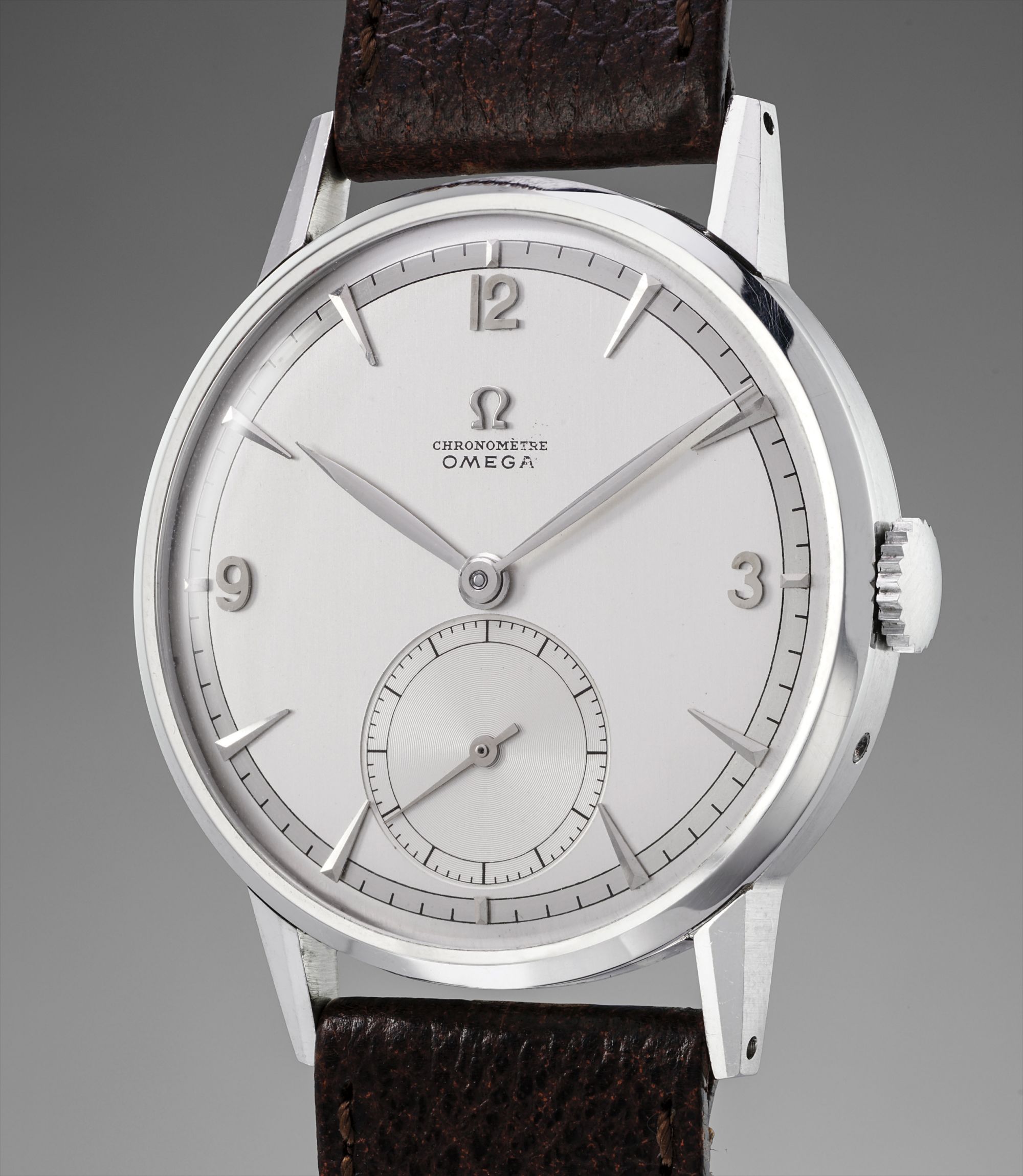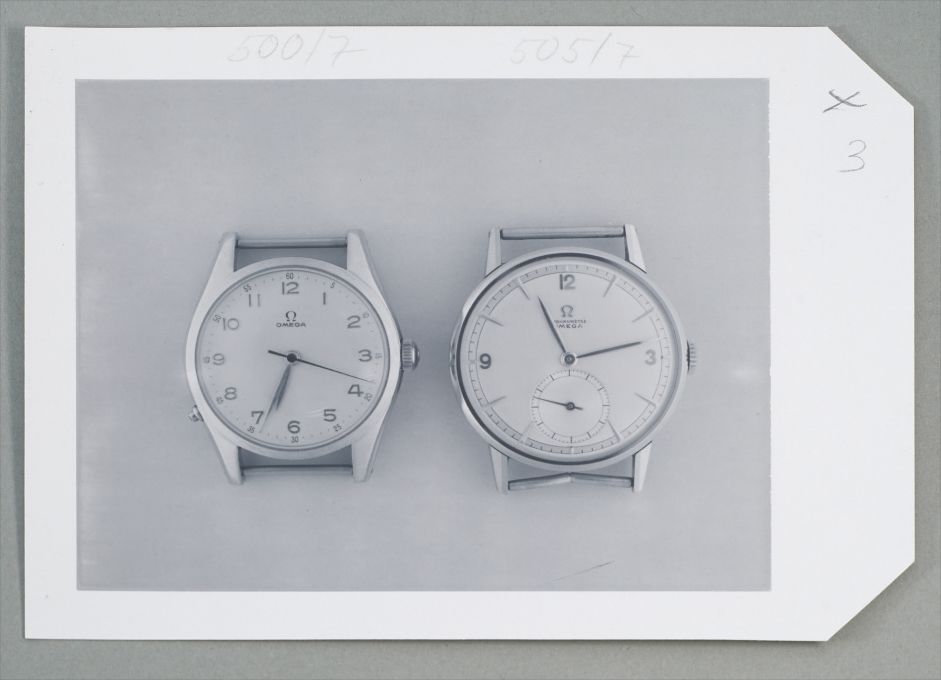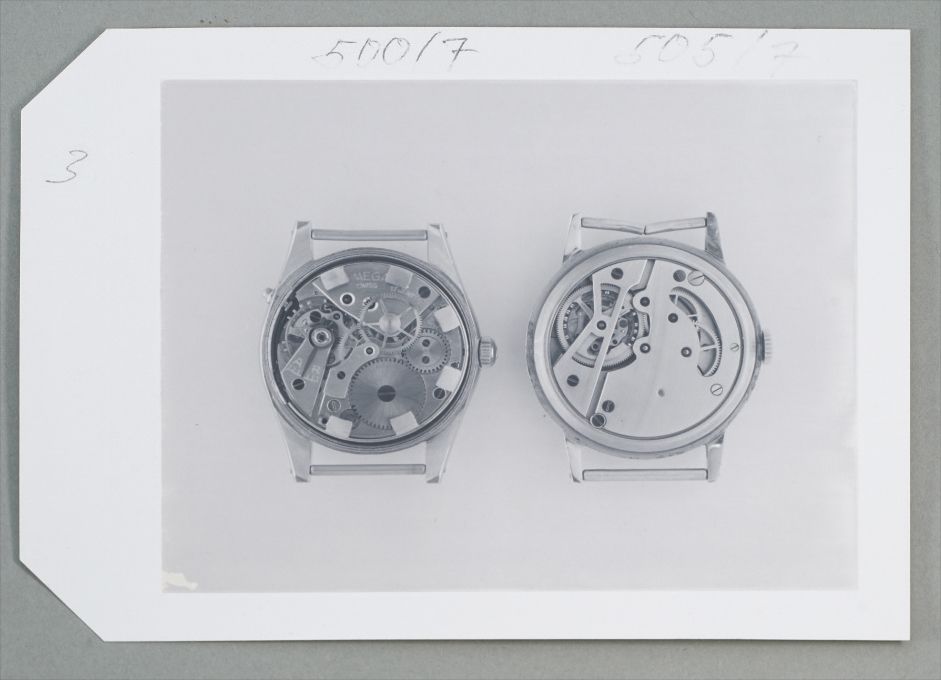









182
Omega
"Tourbillon 30 I"
A historically important and unique stainless steel prototype tourbillon wristwatch
Full-Cataloguing
Since the 1980s, the tourbillon has joined the elite circle of complications to be set within a wristwatch, displaying the maker’s expertise in miniaturizing this system invented in 1801. Prior to that period, tourbillon escapements were quasi exclusively reserved to pocket watches.
The present timepiece, featuring a tourbillon escapement with Guillaume balance, sheds a new light on the history of this complication in wristwatch form as it is most certainly the first prototype of a series of Omega wristwatch tourbillons from the late 1940 that unfortunately never saw the light of day.
In 1947, Omega created twelve Calibre 30 I tourbillon movements of only 30mm in diameter to run in the “wristwatch” category of the Geneva, Neuchatel and Kew-Teddington Observatory trials. In these movements, the tourbillons had a rotation rate of 7.5 minutes as opposed to the more habitual 60 seconds.
In these trials, manufacturers would submit one or several specially prepared movements for competition. Interestingly, these watches were never meant for sale, the purpose of these trials being not only competition but also a testing ground for research on chronometry and of course a marketing and communication tool for the manufacturer in selling their “regular production” watches.
Prior to being allowed to compete, entrants were tested, and those meeting the rigorous standards were eligible for actual competition. The watches were tested in 5 positions and 3 temperatures (4°C, 20°C and 30°C) for a period of 40 to 44 days. Each movement was graded on a performance scale and awarded a certificate with the final score and rating.
It is important to note that these movements did not have a particularly fine aesthetic finish but were technically the best of the best: the surfaces of pinions and wheels were highly polished with exceptionally even tolerances, springs were pre-tested and hand chosen and the dimensions of shafts and bearings perfectly executed.
To make an easy comparison, these competitions were to watch brands what Formula 1 racing is to car manufactures: a laboratory and a perfect display of their knowhow and mastery.
Omega’s twelve Calibre 30 I participated in several trials between 1947 and 1952 and, in 1950, even achieved the highest result that had been obtained up until then within the wristwatch category in Geneva.
In 1987, seven of these twelve movements were discovered by Omega and entirely rebuilt, they were then cased in gold and silver livery and offered to a select group of collectors.
However, whereas it was always believed that these movements had only been created to participate in Observatory trials, illustrations and information contained in letters preserved at the Omega Museum showcase plans for a 30mm tourbillon movement to be housed in a wristwatch, at least one such movement was created thus increasing the total count of cal. 30 I to thirteen.
In a letter dated 1947 and preserved in the Omega Museum, Mr. Marcel Vuilleumier, head of the Watchmaking School of the Vallée de Joux, dreading the arrival of American and British timepieces, underlines the necessity of the Swiss watchmaking industry to concentrate on precision timepieces and suggests creating a tourbillon wristwatch. Recently, an original drawing from the year 1947 of the design of a tourbillon wristwatch prototype case was discovered that further illustrates the proceedings towards the integration of the Calibre 30 I tourbillon movement into a production wristwatch.
The present watch is proof that this project was advanced far enough to produce at least one pre-series model with the 30mm. tourbillon making it superbly and historically relevant.
The present watch, in superb condition, is not only magnificently attractive but has immense significance in horological history, making it most probably the very first tourbillon wristwatch that was supposed to be produced in series.
We sincerely thank Petros Protopapas of Omega and the Omega Museum for their invaluable research on the present lot.
Omega
Swiss | 1848Omega's rich history begins with its founder, Louis Brandt, who established the firm in 1848 in La Chaux de Fonds. In 1903, the company changed its name to Omega, becoming the only watch brand in history to have been named after one its own movements. A full-fledged manufacturer of highly accurate, affordable and reliable watches, its sterling reputation enabled them to be chosen as the first watch company to time the Olympic Games beginning in 1932. Its continued focus on precision and reliability ultimately led their Speedmaster chronograph wristwatch to be chosen by NASA in 1965 — the first watch worn on the moon.
Key models sought-after by collectors include their first, oversized water-resistant chronograph — the reference 2077, early Speedmaster models such as the CK 2915 and 2998, military-issued versions of the Seamaster and oversized chronometer models such as those fitted with their prestigious caliber 30T2Rg.